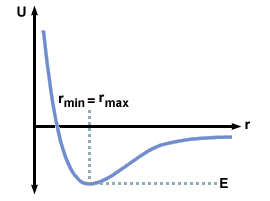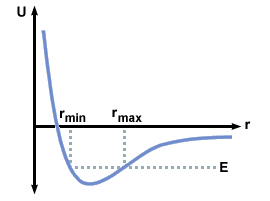Please wait while we process your payment
If you don't see it, please check your spam folder. Sometimes it can end up there.
If you don't see it, please check your spam folder. Sometimes it can end up there.
Please wait while we process your payment

By signing up you agree to our terms and privacy policy.
Don’t have an account? Subscribe now
Create Your Account
Sign up for your FREE 7-day trial
By signing up you agree to our terms and privacy policy.
Already have an account? Log in
Your Email
Choose Your Plan
Individual
Group Discount
Save over 50% with a SparkNotes PLUS Annual Plan!
 payment page
payment page
Purchasing SparkNotes PLUS for a group?
Get Annual Plans at a discount when you buy 2 or more!
Price
$24.99 $18.74 /subscription + tax
Subtotal $37.48 + tax
Save 25% on 2-49 accounts
Save 30% on 50-99 accounts
Want 100 or more? Contact us for a customized plan.
 payment page
payment page
Your Plan
Payment Details
Payment Summary
SparkNotes Plus
You'll be billed after your free trial ends.
7-Day Free Trial
Not Applicable
Renews July 7, 2025 June 30, 2025
Discounts (applied to next billing)
DUE NOW
US $0.00
SNPLUSROCKS20 | 20% Discount
This is not a valid promo code.
Discount Code (one code per order)
SparkNotes PLUS Annual Plan - Group Discount
Qty: 00
SparkNotes Plus subscription is $4.99/month or $24.99/year as selected above. The free trial period is the first 7 days of your subscription. TO CANCEL YOUR SUBSCRIPTION AND AVOID BEING CHARGED, YOU MUST CANCEL BEFORE THE END OF THE FREE TRIAL PERIOD. You may cancel your subscription on your Subscription and Billing page or contact Customer Support at custserv@bn.com. Your subscription will continue automatically once the free trial period is over. Free trial is available to new customers only.
Choose Your Plan
This site is protected by reCAPTCHA and the Google Privacy Policy and Terms of Service apply.
For the next 7 days, you'll have access to awesome PLUS stuff like AP English test prep, No Fear Shakespeare translations and audio, a note-taking tool, personalized dashboard, & much more!
You’ve successfully purchased a group discount. Your group members can use the joining link below to redeem their group membership. You'll also receive an email with the link.
Members will be prompted to log in or create an account to redeem their group membership.
Thanks for creating a SparkNotes account! Continue to start your free trial.
We're sorry, we could not create your account. SparkNotes PLUS is not available in your country. See what countries we’re in.
There was an error creating your account. Please check your payment details and try again.
Please wait while we process your payment

Your PLUS subscription has expired
Please wait while we process your payment
Please wait while we process your payment

Orbits
We can write expressions for both the angular momentum and the total energy. If
pθ is the magnitude of the momentum in the tangential direction, then
since this perpendicular to  , L = rpθ. But pθ = mvθ = m
, L = rpθ. But pθ = mvθ = m = mr
= mr = mr
= mr .
Hence L = r(mr
.
Hence L = r(mr ) = mr2
) = mr2 . Hence:
. Hence:
L = mr2 |
E = 1/2m + +  - -  |
 and the right by L2, and canceling factors
of dt2 we find:
and the right by L2, and canceling factors
of dt2 we find:
    = =  - -  - -  |
 = =  (1 + εcosθ) (1 + εcosθ) |
ε =  |
We can also find the maximum and minimum values of r. The minimum occurs
where the expression for 1/r is a maximum. This is when cosθ = 1 and
the maximum is therefore  . Thus:
. Thus:
rmin =  |
 .
Thus:
.
Thus:
rmax =  |
We can also take the equation and using r2 = x2 + y2, and cosθ = x/r, we can write:
x2 + y2 =   - xε - xε |
The orbits are determined by the various values that ε can take.
When ε = 0, the expression for ε tells us that E = -  . The negative value of the energy just means that the
potential energy is more negative than the kinetic energy is positive. In this
case we have rmin = rmax =
. The negative value of the energy just means that the
potential energy is more negative than the kinetic energy is positive. In this
case we have rmin = rmax =  . The particle is trapped
at the very bottom of a potential well, and the radius does not change as it
goes around the orbit, hence forming a circle. Substituting this value for r
into the energy we have E = -
. The particle is trapped
at the very bottom of a potential well, and the radius does not change as it
goes around the orbit, hence forming a circle. Substituting this value for r
into the energy we have E = -  . Note that we could have derived
this directly by summing the potential energy we found for a circular orbit with
the kinetic energy (Gravitational Potential Energy).
. Note that we could have derived
this directly by summing the potential energy we found for a circular orbit with
the kinetic energy (Gravitational Potential Energy).
E = 1/2mv2 + U =  - -  = - = -  |



 . This describes a circle with
radius
. This describes a circle with
radius  .
.
Elliptical orbits occur when 0 < ε < 1. This means that -  < E < 0. Again the particle is trapped in a potential
well, oscillating now between rmin and rmax.
< E < 0. Again the particle is trapped in a potential
well, oscillating now between rmin and rmax.

 + +  = 1 = 1 |
 and b =
and b =  . This is an ellipse with its center at (- L2ε/GMm2(1 - ε2), 0), and with semimajor and semiminor axis length a and b
respectively. It can also be shown that one focus of this ellipse is at the
origin.
. This is an ellipse with its center at (- L2ε/GMm2(1 - ε2), 0), and with semimajor and semiminor axis length a and b
respectively. It can also be shown that one focus of this ellipse is at the
origin.
Please wait while we process your payment

